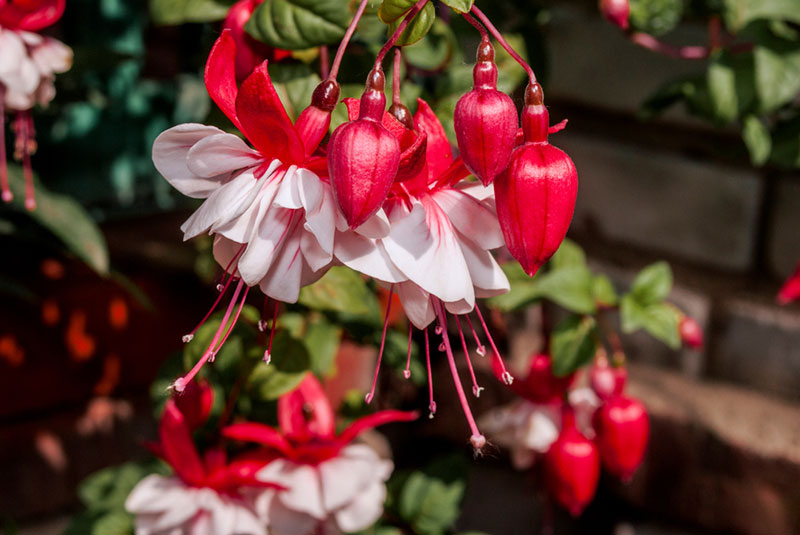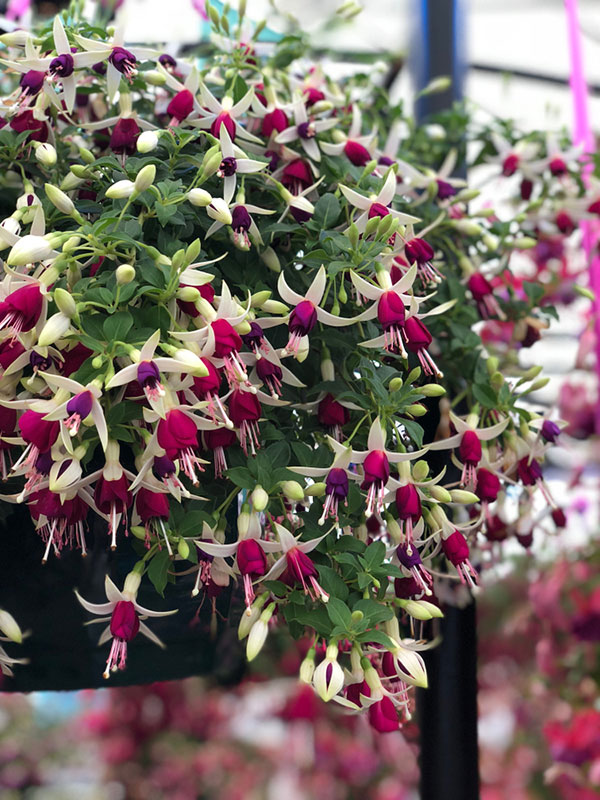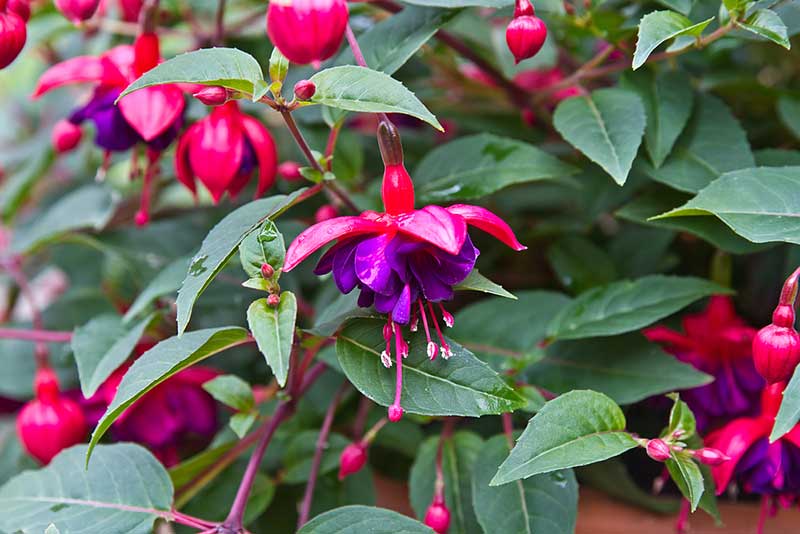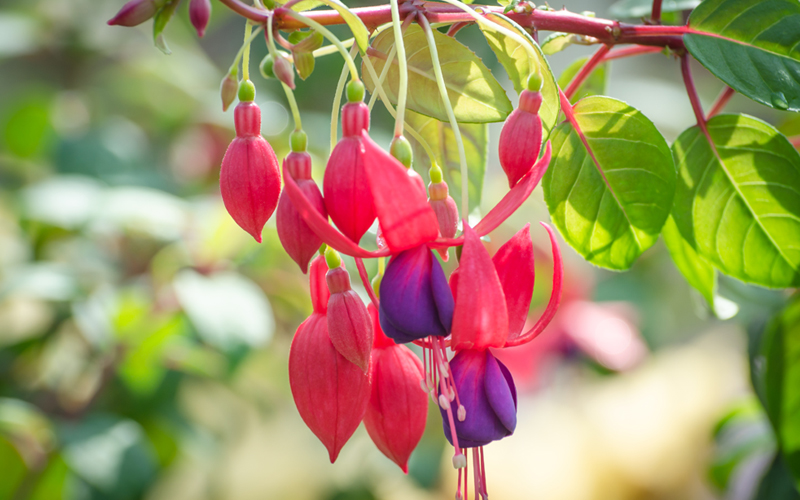
Many gardeners and plant enthusiasts aren’t sure how to properly care for their Fuchsia plants over the winter, and sometimes people end up just throwing them out when the cold sets in. This is understandable, as even though fuchsias are perennial’s, they do not bear well in cold weather, making them somewhat finicky. This does not mean they are a lost cause during the white months though. If you take proper care, they can last you year after year. Before doing away with your beautiful plant, read below to learn how to winter your Fuchsia flowers to keep them coming back.
Remember, the goal when it comes to Fuchsia’s and overwintering them, is to keep them alive, not to see blooming flowers over winter. They will simply not continue to bloom in the winter. There is not sufficient enough sunlight for them to thrive. Your best bet is putting the Fuchsias into dormancy, which is sort of a resting state for plants. If you don’t, they will most likely become infested with pests and not grow very well. In this resting state, the Fuchsia will look dead, but it is basically just taking a winter nap. Another option is to keep them semi-dormant, but this is only for gardeners who happen to have a moderately heated greenhouse that stays between 42 and 45 degrees F. This enables the plant to have slow growth through the wintertime.
The first step in wintering your Fuchsia is going to be bringing them inside your house. Next, spray your Fuchsia plant with water to kill off any hiding pests in the leaves. Keep your Fuchsia plants in a cool dry place, like a basement or an attached garage that’s between 45 to 55 degrees F for example.

Begin to cut way back on the watering. Watering about once every three to four weeks is optimal to keep the Fuchsia alive, but dormant.
The last part of the process of overwintering your Fucshia’s is bringing them out of dormancy. When it nears close to a month before the last frost date in your location, you can take the Fuchsia out of its winter storage location. Cut all the branches on the plant back by half. Doing this encourages the plant to grow and bloom new flowers in the summertime.
If you’re not too sure what the “last frost date” is, it is the latest date that a light or hard frost was recorded 90 percent of the time in your area. It is tracked by historical meteorological records. To find out your last frost date, look to an almanac, which can be found at a library or bookstore, or you can try calling your local extension service or farm bureau.
After trimming the branches, place you Fuchsia in an area away from any direct sunlight, and only bright filtered sunlight hitting it. This is done to acclimate your plant slowly to being outside in the sun again. Abruptly switching from an extreme of cool indoor shade to warm outdoor sunlight can be shocking and traumatic for a plant. It also serves to keep the Fuchsia away from the frost. fuchsiaflower.co.uk notes that the golden two rules of wintering Fuchsia plants are “Do not let the frost get them and do not let them dry out.” You can now start watering it normally again. Once your last frost date has come and gone, you can move your Fuchsia to a shady outside area and care for it routinely.
Although it can be a hassle at times, seeing your Fuchsia come back every year, blooming beautifully every summer, is well worth taking the time to winter your Fuchsia flowers.
Related Articles






